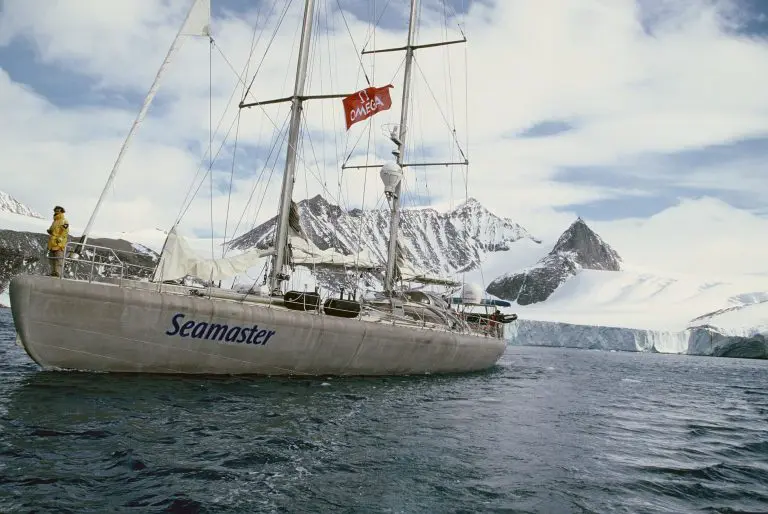“Just on dusk, when we had all finished dinner and were settling in for the evening watches, there was a “whoosh” from alongside and 15 or so Southern White-Sided dolphins, (also known as Hourglass dolphins), came in from astern and began frolicking in the bow wave.”
– Sir Peter Blake
- Location: Approx. 1830 sailing miles to Cape Horn
- Latitude: 49.52S
- Longitude: 117.20W
- Course: 100 deg True
- Wind: Westerly 15 to 18 knots
- Sea: Slight with a low SW swell
- Air temp: 6 deg C
- Sea temp: 4 deg C
- Barometer: 1000 mbs
1000 hours. We are still motoring along with little wind and only a slight sea. There is the ever present south-west swell of a couple of metres in height, but it is quite long and lazy, and we are rolling little, even with the sails down. Why take the sails down? Well, they were flopping about with such force yesterday that the sliders that attach the sails to the masts started to break so down they came for replacements and they have stayed down.
Yesterday, soon after my daily log report was sent, we were suddenly joined by a flock of more than 50 White Chinned and Grey, petrels that wheeled around us but stayed only briefly.
The pilot-house log that is filled in every hour reads:
“1900 hours (7pm): All sails down. Little wind. Luvelly sunny evening. Foresail maintenance underway – very few birds this evening. Both mast tracks checked and siliconed (Janot hoisted up the swaying masts for this. Pencil sharpener giving problems.“
Just on dusk, when we had all finished dinner and were settling in for the evening watches, there was a “whoosh” from alongside and 15 or so Southern White-Sided dolphins, (also known as Hourglass dolphins), came in from astern and began frolicking in the bow wave. Quite small, but with very distinctive black and white markings and very pointed dorsal fins, they stayed for a while, dashing backwards and forwards, criss-crossing just in front of our hugely strong and unpainted aluminum bow plating.
They grow to a maximum of 2 meters, and they frequent the Antarctic Convergence Zone, which is close by to the south of us.
This is where the cold, north-going Antarctic surface water sinks beneath the warmer sub-Antarctic water. In many places this line is easily and precisely distinguished by a sudden change in surface temperature. It forms a physical boundary between the Antarctic and sub-Antarctic zones. It is fairly constant in position, generally not more than 30 miles north of south of the mean. This Antarctic Convergence probably forms the extreme northern limit of drift ice, but we are keeping a good lookout nonetheless. In my racing days down here I have seen icebergs where there are not supposed to be any. We have had our share of frights but that was when our speed was far greater and we pushed our yachts to the limit. Now we are more sedate, and with the radars running 24 hours a day, and a good lookout, all should be well.
Photo credit: Ivor Wilkins


